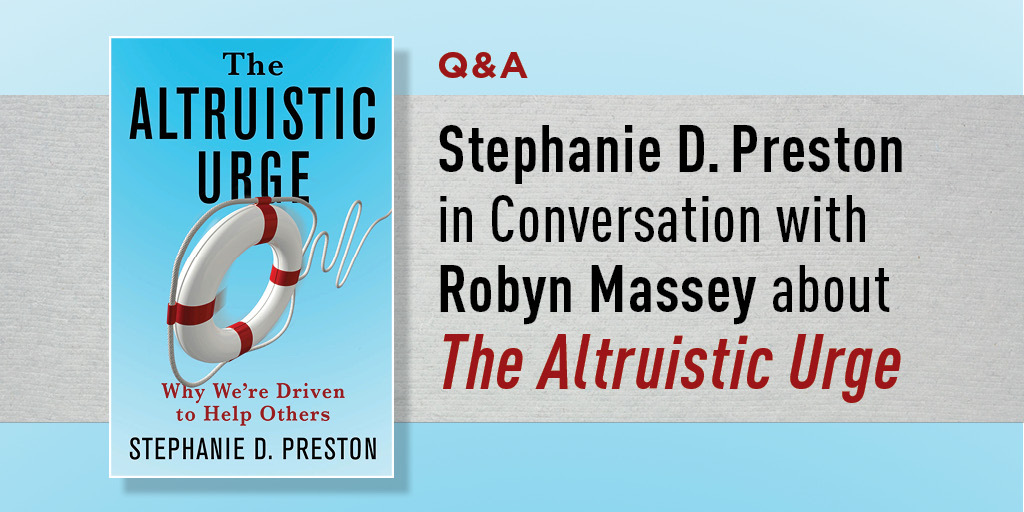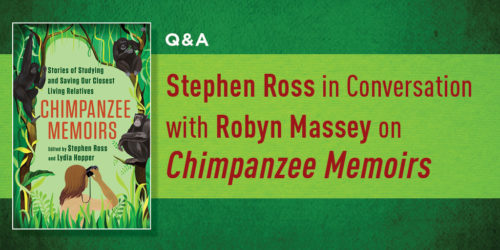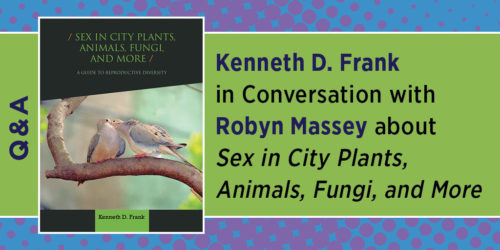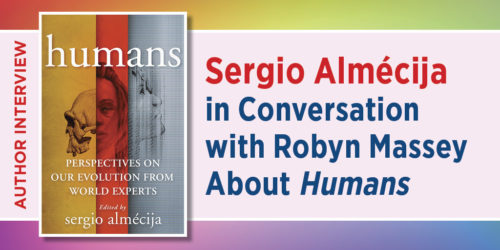Stephanie D. Preston in Conversation with Robyn Massey About The Altruistic Urge

From the Good Samaritan to Wesley Autry, who jumped in front of a train to save another, stories of altruism fascinate people for many reasons. We are struck by these self-sacrificing acts, and moved by such heroism. Why do ordinary people perform acts of astonishing selflessness, sometimes even putting their lives on the line? In The Altruistic Urge: Why We’re Driven to Help Others, Stephanie D. Preston, professor of psychology and director of the Ecological Neuroscience Lab at the University of Michigan, explores how and why we developed a surprisingly powerful drive to help the vulnerable. She opens up about her interdisciplinary research that combines neuroscience, animal behavior, cognitive science, and human psychology and offers insight into her altruistic response model in this conversation with publicist, Robyn Massey.
Robyn Massey: What, from your perspective (from your research), is altruism?
Stephanie D. Preston: Altruism is anytime an individual—a human or nonhuman animal—helps another individual at a temporary cost to themselves. Importantly, it does NOT matter from a biological perspective if there are any benefits to the giver, immediately or later, such as feeling good, social status, rewards for heroism, etc. Those benefits are part and parcel of how the phenomenon evolved naturally into our nervous system and are important supports for a predisposition to care and help.
Massey: Is altruism biologically hardwired, or is it learned and cultivated?
Preston: Nature and nurture always work in tandem, and altruism is no exception. We have genes that ensure that we provide protective, attentive care for our own offspring and kin that can be extended to others in our social group. This predisposition can then be encouraged or discouraged by our environment, even in nonhuman animals like rodents. Early caregiving experience plays a strong role, but even local contexts like who happens to be around you at the moment all conspire to encourage or discourage a response.
Massey: Why are some people more altruistic than others?
Preston: Because altruism relies on many different and interacting genes, neurohormones, and emotional, cognitive, and environmental influences, there are almost an infinite number of ways that someone could end up seeming more altruistic than another. Certainly, genes play a role, particularly for extreme failures of altruism, such as occurs when someone experiences excessive distress in the face of others’ need or is diagnosed with autism spectrum disorder or psychopathy. But the ways that you are cared for yourself and are encouraged to consider others also influence the degree to which you pay attention to and care about others in need, which in turn encourages your response. An underrecognized part of this phenomenon is that people have to feel confident that they know and can enact a successful response in time. Thus, sometimes people with physical prowess can help even if they do not feel particularly empathic, and people who are very empathic might not help. You have to quickly predict that you can respond and improve the situation.
Massey: Why altruism? What inspired you to write this book?
Preston: A lot of people talk about empathy and altruism, and even nonscientists have strong opinions about what counts as altruism and why we have it. I have a different take on the matter than many people, because I view altruism as something that emerges from our mammalian nervous system and, thus, is not specific to humans, does not require advanced cognitive processes, has rewards baked into the mechanism, and can even be issued as an “urge” to respond. All of these features go against a general view that our better angels are the product of our large, advanced brains or that altruism must be fully selfless. Also, there is very little research on heroism per se, and I think that existing nonhuman animal models are particularly well suited to explain the neurobiology of this behavior, which is by definition usually more physical and less premeditated.
Massey: What would you like readers to take away from your book?
Preston: Altruism is a natural consequence of a brain and body that evolved to care for our offspring. We are highly attuned to others’ distress and urgent need, we naturally map their emotions onto our systems for feeling emotion, and our motor systems prepare responses when we have the expertise to solve the problem. We help people, even strangers, even in heroic situations, when the victim resembles the helpless offspring that we evolved to protect, e.g., when the victim is vulnerable, distressed, and in immediate need of aid that we know how to provide. These things proceed without us having to “think” about it. That is just how brains work. We also share this adaptive predisposition with other species because of the way that our brains evolved from common ancestors that we share, e.g., with other caregiving mammals.
Massey: In Western Judeo-Christian culture, there is the famous biblical story about the good Samaritan. Is this a good example of altruism from your perspective? Why or why not?
Preston: The Good Samaritan is certainly one example of altruism. People like the story because it teaches us to extend our compassion beyond our own tribe. People naturally feel more empathy for and want to help “in group” members more than “out group” ones. There is a lot of research on this unfortunate predisposition. However, focusing on these cases can prevent progress. If we only construe surprising acts towards strangers as altruistic, it implies that it is not surprising or amazing when we help close others, which prevents us from realizing how important this context of helping close others is for understanding altruism writ large. It is surprising when we help strangers because our aid evolved in the context of close others, which we must appreciate to unlock the biology of this behavior. My altruistic response model is distinct from other theories because it can explain—at the level of evolution and the brain—when and why people sometimes do help a complete stranger, even in very dangerous and heroic conditions, but still more often help close others. Couching altruism in the aid to our own offspring, we realize that people feel an urge to respond when the other resembles our offspring: when they are vulnerable, helpless, distressed, and need immediate aid that we can give.
Massey: Is there a new story you’d like to cite or that comes up for you as an example of being a good Samaritan, or altruistic?
Preston: I described in the book the case of Wesley Autry, who jumped in front of an oncoming subway car to assist a young man who had fallen onto the tracks after a seizure. Wesley lay down over the young man as the train approached, and they both barely survived when it passed over them, missing their heads by mere inches. This case is more relevant to the “altruistic urge” because it involves a father with experience feeling for and caring for younger, more vulnerable individuals. Wesley was also a union worker with expertise that helped him quickly predict whether they would fit under the train. His split-second decision did not involve extensive deliberation like people often think. Rather, he helped because he was already attuned to helpless, vulnerable individuals, and the victim resembled a helpless juvenile in the moment. His motor system quickly predicted whether his rescue would work and how best to respond. His act was heroic and he was praised publicly for it, but that is not WHY he helped. Like the Good Samaritan, he helped an out group member (of a different race, a stranger), but the other attributes of this situation better capture when we feel that particular altruistic urge.
Massey: If we know that altruism exists, what accounts for our ability to pass by homeless people?
Preston: The altruistic urge model is particularly useful because it so easily explains both when we rush toward danger and when we sit idly by. The brain system involves both approach and avoidance circuits, which naturally oppose each other. Thus, when we are primed for caregiving and we know what to do, the approach circuit predominates processing, but when we are more guarded and do not know what to do or sense danger, we naturally avoid helping (which inhibits the neural system needed to approach). This opposing avoidance circuit can be regrettable, such as when we ignore chronic, widespread need or needs that are too distant to be fully appreciated. However, as a fundamental attribute of a brain or nervous system, it is largely adaptive. For example, people don’t usually rush into icy waters to help someone when they can’t swim or try to carry people out of burning buildings when they are too weak. Because we can predict when people will care and respond, however, we can also do something about it and try to improve our response to those who do not elicit the urge.
Massey: Who/what are the most altruistic creatures on earth? Do we know?
Preston: I’m not sure how to answer that because there are so many creatures that exhibit altruism or cooperation, including amoebae and mushrooms and ants. Biologists such as the late E. O. Wilson often study “eusocial” animals like bees and ants because they were genetically designed to help others in their colony, who share more of their genes than we do. Among mammals, usually those that care longer for offspring, bond to their mate, or live in tight social groups are thought to be more altruistic. It does not seem linked to brain size, like many people assume. For example, besides the bees and ants, who do not even possess central nervous systems, there are birds that exhibit altruism, and rodents, like the ants, can release a trapped conspecific and share food; moreover, chimpanzees are not particularly altruistic. Thus, I would not put my money on brain size or intelligence for the altruistic urge per se.
That being said, forms of altruism that unfold over time and require considerable deliberation—like declaring war or donating billions of dollars of federal aid to support ethnic groups from potential elimination, enslavement, or starvation—help more people writ large. This sheer “numbers game” is the focus of the “effective altruism” movement and of theories like Paul Bloom’s Against Empathy.” I focus instead on how the brain evolved to want to help in the first place. This capacity to perceive and to want to help those in distress is still foundational even when we decide to help many people, and it’s part and parcel of the model that even large-scale aid is directed to those in offspring-like conditions (e.g., vulnerable, distressed, needing urgent aid that we can give). There are, of course, also selfish reasons nations provide aid and look the other way, which are part of that deliberated system.
Massey: Are there any insights into regions of the world that are more altruistic than others?
Preston: It depends on your definition of “altruistic.” Many people focus on a divide between individualistic and collective cultures, such as between the United States as a very individualistic culture and China or Japan as very collective. There is a caricature of Americans as a “me” culture being selfish and collective cultures as sacrificing more for family or work group. This stereotype overlooks, however, ingroup versus outgroup aid. I think of Americans not as less sacrificial, but as giving their aid across a broader group of people, e.g., donating more to charities and giving to strangers on the street even if they are less likely to sacrifice their life and career to stay with their family. If you wanted a recipe for an altruistic culture, it would be one that is raised to consider and care about other people and to consider it normative to help the vulnerable. At the current moment, America is divided on this because most people teach some version of the Golden Rule, but some people construe need as your own fault or resulting from laziness or stupidity. This undermines the drive to help because those with less are not considered truly vulnerable, like a helpless infant, but willfully worse off. To help people broadly, we have to also be taught about systemic problems like racism, poverty, and inequality and the role that they play in keeping people in chronic need that we are partially responsible for and are morally obligated to remediate. Large, wealthy nations may give more money in total to help others, but this is also partly to secure power and concentrate wealth and should not be considered a reflection of the everyday altruism of their citizens.








